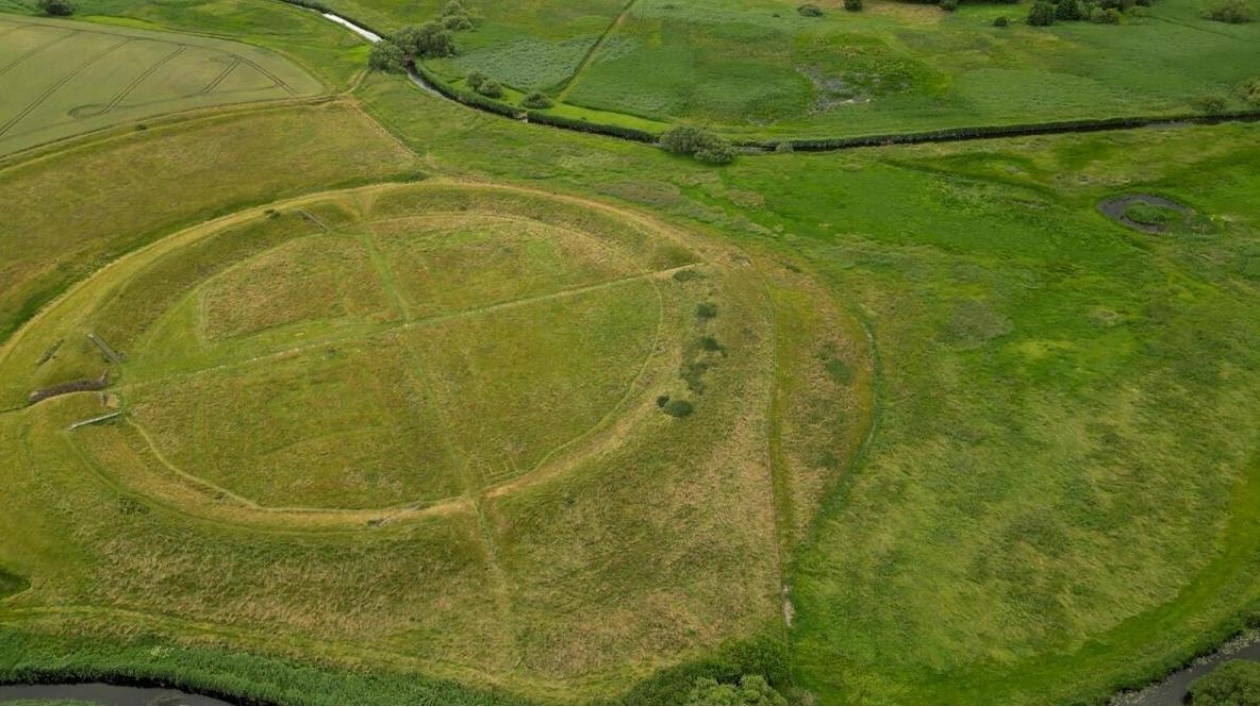A millennium-old Danish Viking fortress, Trelleborg, is captivating tourists by providing a deeper insight into the lives of Scandinavia's renowned raiders. Alongside Denmark's four other recognized ring fortresses, Trelleborg in the eastern part of the country was inscribed as a UNESCO World Heritage site in 2023, placing it on par with global landmarks such as Egypt's pyramids and the Great Wall of China.
Experts argue that this fort is proof of the sophisticated architectural skills of the seafaring Norsemen, challenging their reputation as fearsome yet primitive marauders. "The Vikings are supposed to be primitive marauders and this doesn't seem like primitive marauders," noted archaeologist Soren Sindbaek. Built by the famous Viking king Harald Bluetooth, Trelleborg served as a symmetrical ringed fortress for his warriors and a testament to his authority.
King Bluetooth, after whom the Bluetooth wireless technology is named, is celebrated for converting the loosely defined Scandinavian kingdom to Christianity in the late 10th century. Over a millennium later, his 136-meter (450-foot) diameter fortification continues to impress visitors. "It's just wonderful to be here and think that people have been living and fighting and working here for so many years," remarked Norwegian Inger Steen, a 57-year-old history enthusiast.
Walking along the fortification's ramparts, Malte Seils, a 45-year-old German tourist, was equally captivated. "You can walk into the fortress and mark the places where the houses were, so you can imagine how it might have looked 1,000 years ago," Seils shared. Originally housing 31 longhouses, the communal living spaces for the warriors and their families, Trelleborg offers a glimpse into the past lives of its inhabitants.
To aid visitors in visualizing the fort's original appearance, miniatures and illustrations are provided. Denmark's national museum, which oversees the site, plans to restore one of the ramparts and three of the longhouses to recreate the Viking Age atmosphere. As reconstructions of historic Viking sites gain popularity, visitor numbers at Trelleborg have surged from 29,000 to 75,000 annually over the past decade.
"We became a UNESCO World Heritage Site in September 2023. Within the first month, we saw a 65 percent increase in the number of visitors," disclosed site director Anne-Christine Larsen. Similarly, the Jelling Viking site in central Denmark has experienced a doubling of visitors from 2014 to 2023, reaching 400,000.
Public interest in the Norse warriors has been fueled by TV series and popular culture. "I'm sure that 'Vikings' and 'Game of Thrones' have played a very important role," Larsen added. The site was nearly lost forever but was saved by the Danish national museum in the 1930s, which prevented a local motorcycle club from building a racing track on the site.
For Larsen, the Trelleborg fort symbolizes the formation of the early Scandinavian state and King Harald Bluetooth's increasing power. "It's also an attempt for Harald Bluetooth to collect the whole country" to his cause, she explained. The fortress was quickly constructed around 975 AD to defend against an attack by the Holy Roman Empire. However, 20 years later, the ring fortresses were abandoned as the threat of invasion subsided.
"This is what happens to a lot of military installations over time," commented Aarhus University researcher Sindbaek. They may seem like "a good idea and perhaps even an urgent necessity at one point." But "then things change, and suddenly they are no use at all".






